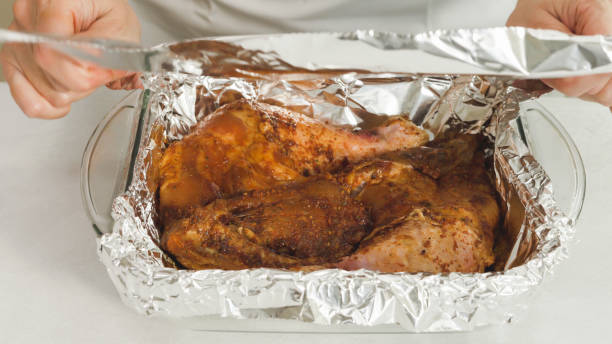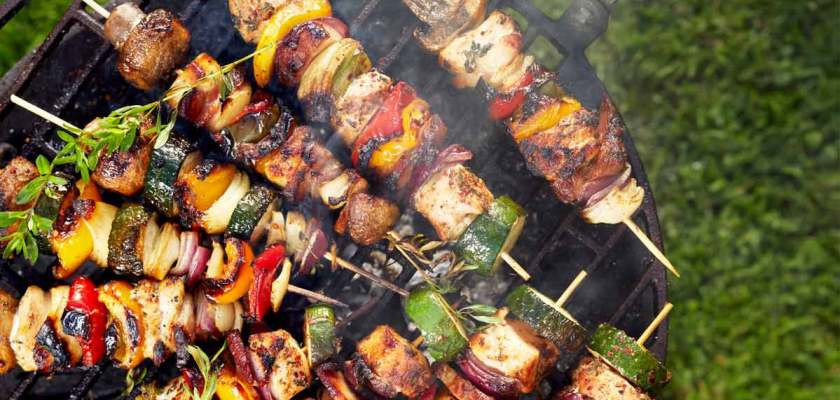
This article will provide some useful tips and tricks for applying dry rub. For a uniform coat, you should rub the spice mixture onto the meat with your hands. If you are preparing meat that has skin, rub the rub under the skin and along the edges. This will increase your meat's flavor. Before you apply dry rub, here are some key ingredients.
Be sure to moisten the meat before you rub it
You want your meat tender and juicy so moisten it first before you apply a dry rub. Salt can enhance the flavor of meat by allowing it to penetrate the meat, and then flavor it from the inside. Salt enhances flavors and aromas. That is why it should be used in dry rub recipes. Salt is generally added to your rub at a ratio of 1 to 1 with meat.
Use a dry rub liberally to all sides of the meat. When you have thick cuts of meat, be sure to season both the sides and the main body. Use the opposite hand to rub seasonings into meat. You want the seasonings in the meat so the rubbing motion should be used. The dry rub can then be applied to the meat. You have two choices: either immediately grill it or wait for at least 30 minutes before you apply another coat.
Dry rub the meat thoroughly with a moist cloth. This will help the dry rub stick to the meat better. After it is completely dry you can wrap it tightly with plastic wrap and let it rest for at the least one hour. Before you apply a dry rub to the meat, make sure it has been well marinated. This will prevent bacteria growth and ensure that dry rub does not become stale.
Important to note that marinades are not just for flavoring your meat. Marinades can also be used to tenderize the meat. This is due to enzymes working on protein strands. Although liquids will not alter the flavor of a dry rub, they will make it stick better to meat and give it a smoother surface. You might marinate your meat at least a couple hours before using dry rub. This will allow it to soak overnight.
You can also moisten a dry rub. Brown sugar is the most common base for dry rubs. This sugar is slightly moist and forms a good glue on the meat. Another option is maple and turbinado sugar. You should be careful as this sugar is very easy to burn. Both can be combined. You must ensure that your rub is appropriate for the type and style of meat you are using.

Once the meat has been marinated, you can add a second layer to it with a rub. This is a great way of adding flavor to your meat. However, make sure you apply enough rub to ensure it sticks to your meat. Commercial rubs are also available. You can also make your own mix to make your personal blend. Depending on the location of your dry rub, you will need to adjust the amount. Science recommends using one tablespoon per pound. However, it's important to experiment and figure out what works best for you.
Sprinkle with sugar or paprika before rubbing with dry rub
To add spice to your ribs, you can sprinkle them with sugar or with paprika and then finish by adding smoked paprika. There are many types and levels of paprika. But you want to select the most intense. If you're not sure, you can purchase paprika that doesn't have a label. This type of paprika will not add as much flavor as the labeled variety.
Dry rubs are easy to make at home and can be frozen for quick cooking. It combines savory spices with dark brown sugar, which will promote browning. This combination is sweet and savory, which will enhance the flavor in any meat. For added variety, you can even make your own mix with your favorite herbs. You will be more satisfied with it the more you experiment!
Before you apply a dry rub on meat, ensure that it is dry. You should apply the rub to about one-and-a half pounds of meat. Apply the rub generously to the meat, and then massage in the rub. A dry rub can be used to coat a chicken breast, a pork loin rib or an ice cream sandwich. Make sure to adjust the amount according to how you will cook it.
Groceries sell commercial rubs. Some are popular and have loyal followers. A base of salt is often the starting point for commercial rubs. Salt is cheap, and it adds bulk. But paprika is the best seasoning for meat. Making your own rub is the best way to personalize the taste of your ribs. Mixing your own rub is a cheaper option than buying a commercial rub.
Dry rubs use herbs and spices to enhance the natural flavor of meat. If you combine the right spices and herbs, even cheap cuts of meat can taste like a million-dollar steak. A dry rub can include various types of salt and sugar as well as chili peppers, garlic powder or mustard powder. These rubs are very easy to prepare and store. They give meat a great taste.
Dry rubbing differs to dry brining in the fact that it does not require you to apply the seasonings prior. If you do plan on adding dry rub to your meat before it is ready, avoid using sauces. Although this may seem convenient, it could cause your meat to become too soft and mushy. However, most people prefer to apply the dry rub directly before grilling.
Signature ingredients in dry rubs
When making your own dry rub, there are a few things you should consider. Spices and herbs can lose their aroma and flavor after nine months. Coffee grinders are a great way to enhance the flavor of freshly ground spices and herbs. Mix your dry rub just before you use it. This will prevent the herbs and spices from losing their flavor. While you can make the dry rub ahead and serve it immediately, for the best results, it is best to mix it just before serving.

There are many types of rubs on the market. The first type is called savoury. Its main ingredients consist of spices like dry mustard, onion powder, dry garlic powder, dry paprika and chile. It also has spices like red chili flakes and dried chipole, which make it hotter. It can be used on meat and vegetables, as well as inedible items, like fish.
Dry rubs are made with a mix of herbs and spices that are applied to meat before it is cooked. There are many types of rubs, each with different amounts of spices. For example, a barbecue rub has coarse salt, black pepper and paprika. While a Jamaican Jerk mix includes allspice (nutmeg), ginger, cayenne pepper, and allspice. Dry rice can be added to the rub for a more flavorful and heat-rich blend.
When creating a dry rub, you should keep it in an airtight container. It can be used immediately or stored in a container for up to a week. After blending the ingredients, you can then spread it on a rimmed baking sheet or in a large bowl and rub the meat with it. The meat will take in the flavor and taste great! Let the meat rest for at least eight hours after applying the rub.
Dry rubs are a great way to add flavor and texture to your meat, without the need for additional sauces. Dry rubs are quick and easy to make. They will enhance the flavor of your meat without any sauces. They are quick and easy to prepare, and can be used right before dinner. You can mix them yourself or purchase dry rub ingredients that you shake on the meat. You can even freeze the dry rub after making it.
Another important consideration when making your own rub is salt. Salt is an essential component of most rubs. But it isn't easy to get rid. Because many rub manufacturers don’t have a solid understanding of the science behind salt removal they won’t make a salt-free version. It is best to separate the salt and rub them while you make them. This will allow you to have greater control over how the oil is applied and prevent the salt from interfering in the cooking process.
FAQ
What are some basic cooking skills?
Basic cooking skills include the ability to read recipes and measure ingredients. This is the first step to learning how to cook. Cooking can be a great way of saving money, as you don't need to go out to eat all the time.
Where can you buy high quality kitchen equipment
High-quality kitchen equipment can be purchased online. There are many online shops that sell all sorts of kitchen tools. Before purchasing any kitchen equipment, however, make sure that you read reviews and ratings before buying anything. You can also ask other people who own similar items if they would recommend them.
What is the best way to store leftovers?
Tupperware containers are a good choice for leftovers. These containers protect food from spoilage and keep it fresh. They keep foods warmer for longer. You can freeze leftover food in freezer bags. When freezing food, place the bag inside another freezer bag so that air doesn't escape. After the food is frozen, place it in a sealed container like a ziplock bag.
Statistics
- under 10 Kids have been taught that there is special food just for them, and Fiese says that 10 percent of kids will throw a tantrum if they don't get the food they want. (washingtonpost.com)
- On average, chefs earn $58,740 a year, according to the BLS. - learnhowtobecome.org
- The median pay for a chef or head cook is $53,380 per year or $25.66/hour, according to the U.S. Bureau of Labor Statistics (BLS). (learnhowtobecome.org)
External Links
How To
How to cook a Steak
The right cooking method for any type of meat depends on its thickness. Thicker steaks cook best at low heat. Thicker steaks require higher temperatures.
They will lose their flavor if they are overcooked. Make sure to remove the steaks from the pan after it is done. This will help you avoid burning your skin.
Cooking times will vary depending on how large the steak is and what degree of doneness you desire. Here are some general guidelines:
Medium Rare: Cook the meat until it reaches medium rare (63°C). This can take anywhere from 3 to 5 minutes per side.
Medium: Cook until medium, which means the internal temp reaches 160degF (71degC). This normally takes around 6 minutes per side.
Cook well until done. That means that the internal temp reaches 180degF (82degC). This can take between 8-12 minutes per side.